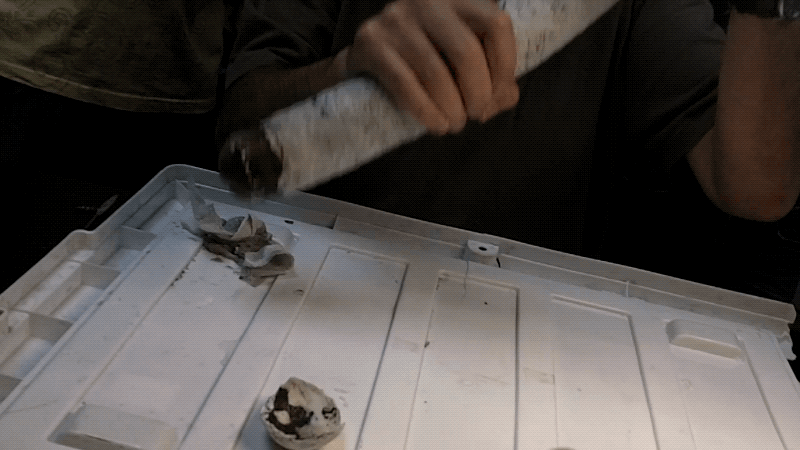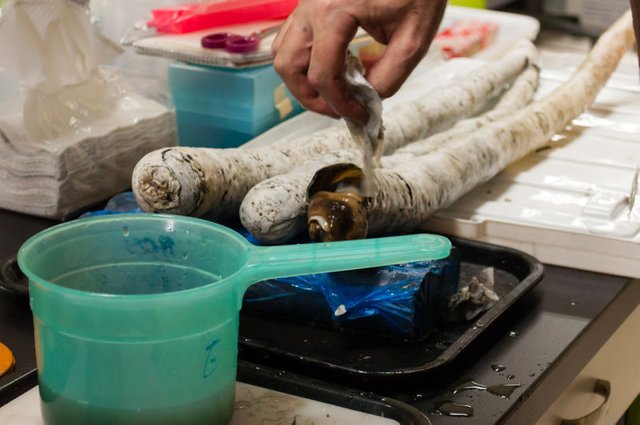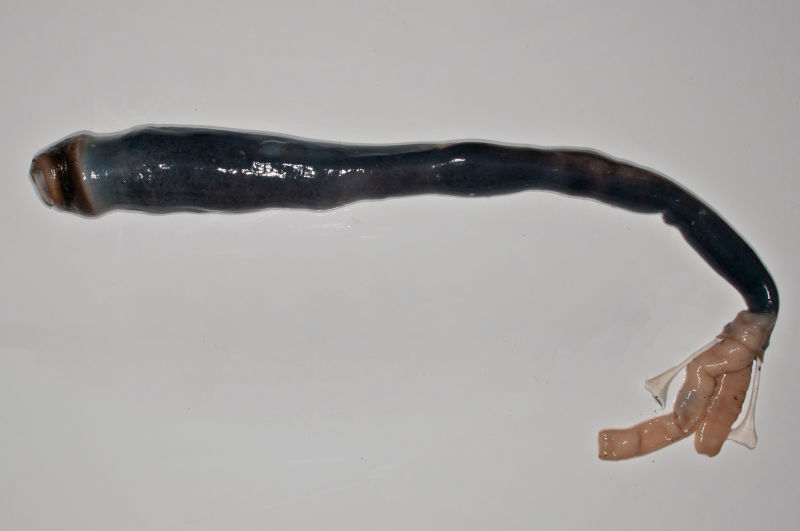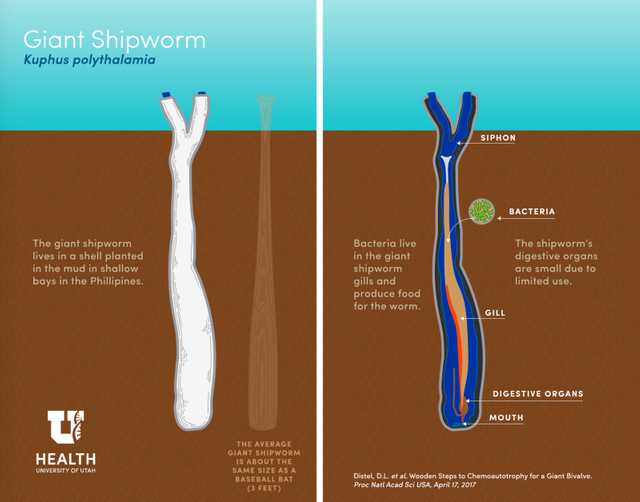This Alien Worm-Creature Will Haunt Your Nightmares

New species are discovered frequently, but this creature is unlike anything we’ve seen before. Called the giant shipworm, it lives inside a long shell where it consumes noxious chemicals at the bottom of muddy lagoons. An international team of scientists are now the first to study this elusive animal in the flesh, but after taking a closer look at this...thing....we kind of wish they had left it alone.
A new study published in the Proceedings at the National Academy of Sciences is the first to describe the mud-dwelling animal, Kuphus polythalamia. This study, led by scientists at the University of Utah, Northeastern University, University of the Philippines, Sultan Kudarat State University, and Drexel University, is the result of an effort to not just document Philippine biodiversity, but to also enhance the research capacity of the host country. As study co-author Margo Haygood told Gizmodo, “It’s a great example of the power of collaboration...it’s amazing how much we are still learning about life on this planet in the 21st century.”

Scientists have known about the existence of the giant shipworm since the 18th century, sort of. The animal’s tusk-like shell casings—which measure anywhere from three to five feet long—are fairly common, but no one had ever found one with a living creature still inside. Part of the problem was that researchers weren’t sure about the animal’s preferred habitat. That changed after the scientists behind the new study watched a Philippine documentary showing the shells planted into the mud of a shallow lagoon. This inspired them to set up an expedition, during which they successfully managed to collect live specimens in a Philippine lagoon laden with rotting wood.
Once in the lab, the researchers washed putrid mud off an animal’s shell, snapped off the outer cap, and slowly “poured” the inky black contents that is the shipworm onto an examination table.
“It was a thrill, partly because we had longed to get our hands on one for so long, and partly because the animal is so strange,” Haygood told Gizmodo. “When I looked into the tank and saw the strong jet of water shooting from the siphon of the animal, I was so excited that they were alive and healthy. When we opened the tube I was struck by the dramatic dark color of the body, which is so different from the pale body of normal shipworms.”

Indeed, this animal is a close relative of the more common shipworm—a group of saltwater clams with long, soft naked bodies. The researchers had a strong feeling that the giant shipworm would be radically different than its diminutive cousin, and they weren’t disappointed.
The non-giant version of shipworms burrow deep into the wood of trees that have plunged into the ocean, digesting it with the help of bacteria. Giant shipworms, on the other hand, live in mud.

Whereas normal shipworm line their tunnels with a thin layer of shell, the giant shipworms have developed that thin layer to a thick, heavy, sturdy tube,” said Haygood. “Normal shipworms don’t cover the deepest part of the burrow with shell because that is where they are grinding up the wood and eating it. The giant shipworm’s tube is capped, covering its mouth, so it can’t eat in that way.”
Instead, the giant shipworm feeds of noxious gasses produced in the mud, and like other brands of shipworm, it recruits bacteria to seek out nourishment. The organic-rich mud in which the giant shipworms live produce hydrogen sulfide, which smells like rotten eggs. These fumes would make a human sick, but they provides a meal for giant shipworms. Or more accurately, a meal for the bacteria living within the animal’s gills. The bacteria takes the hydrogen sulfide and converts it into organic carbon, which the giant shipworms consume as food.
It’s a process that’s actually surprisingly similar to photosynthesis, except that toxic fumes are used for energy in place of the Sun. It’s tempting to describe this creature as being more plant-like than animal-like, but the researchers say it’s most definitely an animal.
“Its bacteria are more plant-like than the symbionts of normal shipworms,” explained Haygood. “Although the giant shipworm is eating the food produced by these plant-like bacteria—like we eat the plants we grow—it is a far more intimate relationship than our relationship to our food.”
Importantly, the giant shipworm partners with different bacteria than the more common shipworm, which may explain how this creature evolved from eating wood to thriving on noxious gases in the mud.
It’s hard to believe that something like this actually exists. But nature is constantly proving itself stranger and more horrifying than human imaginations, so maybe we shouldn’t be that surprised. Life finds a way, as they say.
http://gizmodo.com/this-alien-worm-creature-will-haunt-your-nightmares-1794389573
Thanks for reading! Upvote, resteem and follow if you enjoyed!
